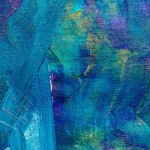The Power of Visual Storytelling in Graphic Design
Introduction: Understanding the Role of Visual Storytelling in Graphic Design
Welcome to our blog, “The Power of Visual Storytelling in Graphic Design.” In this blog, we explore the pivotal role visual storytelling plays in the field of graphic design. Visual storytelling is the art of conveying a narrative using visuals, and it’s a powerful tool in graphic design. It helps to communicate complex ideas in an easily digestible format, making a lasting impression on the audience. This art of combining images and text is not just about making designs look attractive; it’s about connecting with the audience on a deeper level, evoking emotions, and driving engagement. It’s a vital skill every graphic designer should master to create compelling and effective designs.
The Evolution of Visual Storytelling in Graphic Design
Visual storytelling in graphic design has significantly evolved over the years, shifting from basic, simple designs to more complex and engaging visuals. In the early stages, graphic design was mainly focused on typography and layout design. However, as technology advanced, designers began to incorporate images, illustrations, and even animations to communicate their stories more effectively. This evolution has made graphic design more interactive and impactful, allowing designers to connect with their audiences on a deeper level. The power of visual storytelling in graphic design lies in its ability to convey messages, evoke emotions, and stimulate the imagination, all of which are crucial in capturing and maintaining the audience’s attention.
The Science Behind Visual Storytelling: Why Our Brains Love Visuals
Visual storytelling in graphic design is a powerful tool because our brains are wired to respond to visuals. Science tells us that the human brain processes images 60,000 times faster than text. This means when we see an image, we understand its message almost instantly, making visuals a highly effective means of communication. This is because a significant portion of our brain is devoted to visual processing, which is a remnant from our evolutionary past when recognizing visual cues was crucial for survival. This is why visual storytelling is so impactful; it taps into our innate ability to quickly interpret and remember visual information. So, when graphic designers use visuals to tell a story, they’re not just making something look attractive, they’re engaging the viewer’s brain in a way that words alone can’t.
Key Elements of Visual Storytelling in Graphic Design
Visual storytelling in graphic design is a powerful tool that can effectively convey complex narratives in a simple, engaging manner. The key elements that make up this art form include color, typography, composition, and imagery. Each of these components plays a vital role in creating a compelling visual story. For instance, color can evoke emotions, set the mood, and highlight essential parts of the story. Typography, on the other hand, can guide the viewer’s eye and can also convey the tone of the message. Composition helps to structure the story, making it easy for the viewer to follow, while imagery, through symbols and illustrations, can express ideas and concepts that words cannot. By mastering these elements, graphic designers can craft effective visual narratives that captivate and resonate with their audience.

The Power of Color and Typography in Visual Storytelling
Color and typography are two powerful tools in visual storytelling that significantly impact the effectiveness of graphic design. Color sets the mood and tone of the design, evoking certain emotions in the viewer. For instance, red can create a sense of urgency, while blue can instill calmness. On the other hand, typography enhances the readability and comprehension of the design. The style, size, and arrangement of the text can guide the viewer’s eye and emphasize important points. Together, color and typography can make a design more engaging, memorable, and impactful, helping to tell a story visually.
Case Studies: Effective Use of Visual Storytelling in Graphic Design
Visual storytelling is a powerful tool in graphic design, capable of conveying complex ideas in a simple, engaging manner. Case studies reveal its effectiveness across various fields such as marketing, education, and entertainment. For instance, brands use visually appealing infographics to present data and statistics in an easily digestible format, enhancing customer engagement. In education, graphic design aids in creating visually rich textbooks, making learning more interactive and enjoyable. In the entertainment industry, graphic designers use visual storytelling to create compelling movie posters or book covers that instantly grab attention. Thus, visual storytelling, when used effectively, can significantly enhance communication and engagement.
The Role of Technology and Software in Enhancing Visual Storytelling
Technology and software have significantly transformed the way we approach visual storytelling, especially in the field of graphic design. They serve as powerful tools that allow designers to create compelling narratives in a visually engaging manner. With the use of advanced software, designers can easily manipulate images, create animations, and generate 3D graphics, which were once a daunting task. This not only enhances the aesthetic value of the story but also aids in conveying complex ideas more effectively. Therefore, the integration of technology and software in graphic design has opened up new avenues for more dynamic and impactful visual storytelling.

Challenges and Solutions in Implementing Visual Storytelling in Graphic Design
Implementing visual storytelling in graphic design comes with its share of challenges. A primary issue is the struggle to effectively communicate a complex narrative visually, without the aid of text. This relies heavily on the designer’s ability to use color, shape, and composition to convey the story. Another challenge is ensuring cultural relevance and avoiding visual stereotypes, which requires a deep understanding of the intended audience. To overcome these challenges, designers need to focus on mastering the principles of design and continually learning about diverse cultures and perspectives. They should also seek feedback to understand if their visual narratives are being interpreted as intended, making adjustments as needed.
Future Trends: The Evolution of Visual Storytelling in Graphic Design
Visual storytelling in graphic design is rapidly evolving, adapting to new technologies and user behaviors. Future trends indicate a shift towards more immersive, interactive experiences. Augmented Reality (AR) and Virtual Reality (VR) are becoming increasingly prevalent, allowing designers to create multi-dimensional narratives that engage audiences on a deeper level. Also, the rise of data visualization is enabling graphic designers to tell complex stories in a straightforward, easily digestible manner. Designers are leveraging these advancements to create compelling visual narratives that not only capture attention, but also evoke emotion and drive action. So, the future of visual storytelling in graphic design promises to be even more dynamic, engaging, and impactful.
Conclusion: Harnessing the Power of Visual Storytelling for Successful Graphic Design
In conclusion, visual storytelling is a powerful tool in the realm of graphic design. It enables designers to create compelling narratives that engage, inspire, and connect with audiences on a deeper level. By effectively using elements such as color, typography, imagery, and layout, designers can evoke emotions and convey complex messages in an easily digestible manner. The success of a design largely depends on how well it tells a story, making visual storytelling a vital skill for every graphic designer. Harnessing this power can lead to more impactful designs that successfully communicate the intended message and resonate with the audience.





